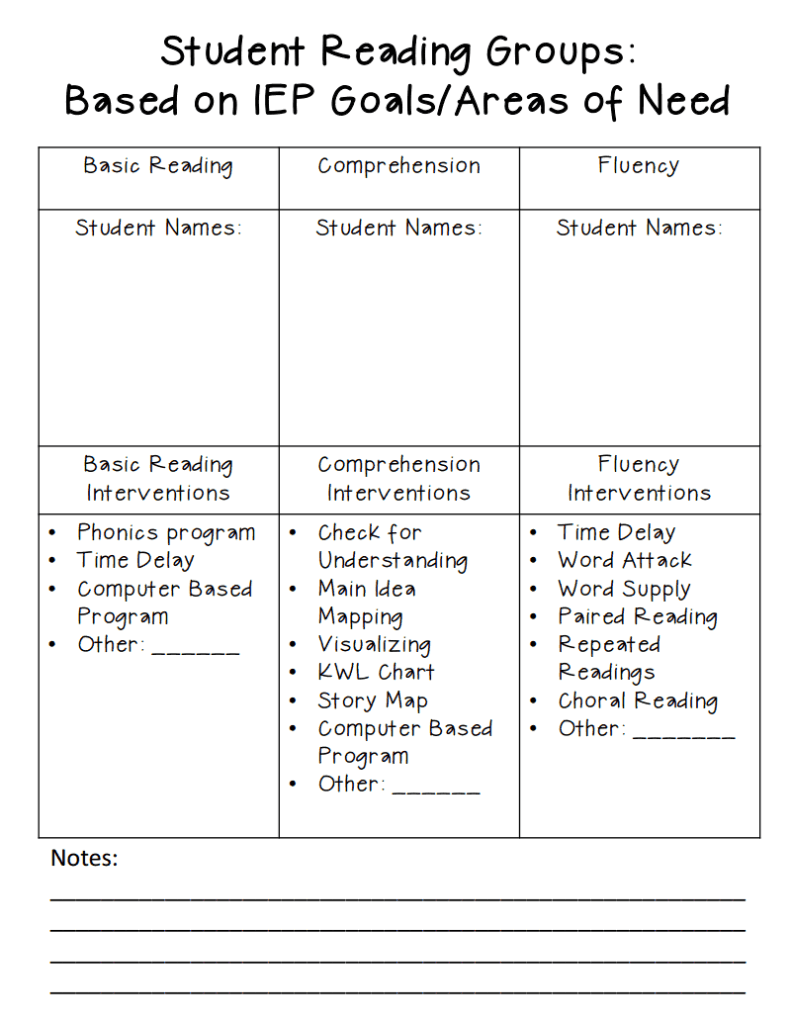
I will be back this week with more on evidence-based practices, but today we have a special surprise. Kim from Mrs. H’s Resource Room is going to share her strategies on reading with you, which I know you will enjoy! Thanks Kim!
Hey there! I am Kim from Mrs. H’s Resource Room and I am so excited to be guest blogging today for Dr. Reeve! I have been teaching special education since 2004. I have taught in the resource and co-teaching setting, but my heart really lies in teaching in the resource room. I really enjoy digging in and finding what my students need to be successful with the most basic of academic needs: reading, writing, and math. While I am a huge proponent of inclusion and co-teaching, I think it is so important to reach my students where they are and teach them the basic skills they are missing. Reading and math is an important part of student success.
So, without further ado, Dr. Reeve asked if I would share some about reading in my classroom. I am so excited to share with you about how I decide what to teach in reading. My game plan for reading can be summed up using this amazingly simple acronym: READING 🙂
R-Read IEPs: The most important thing you can do before you meet or teach any of your students is to read the IEP. You have to be familiar with and become one with what is on this legal document. Specifically talking about reading in this case, you need to know which types of goals your students have, where they are presently performing, and the goal. My students have one (or a combination) of three types of reading goals: comprehension, basic reading, or reading fluency. Reading the IEP tells me what the student can do and what I need to work on during the resource reading time. Reading the IEP of all of my students also allows me to begin grouping my students by need. I teach three grade levels and I have third, fourth, and fifth graders all at one time for resource reading. Knowing how many and which students have particular reading goals allows me to group my students, so I can use my time with each of them in the most efficient and effective manner.
E-Evaluate students: Yes, the IEP gives me wonderful and invaluable information about the student, but when I start a new year or a new student comes to me throughout the year, I need to know what the student can and cannot do at that moment in time. Here is a list of what I use for reading assessment:
Dr. Fry’s Informal Reading Assessment-Grade K-8 This book contains assessments for sight words, silent reading comprehension, and reading level placement tasks
Running Records and Level Placement tests (I use Reading A-Z to find text and benchmark assessments)
NWEA MAP Assessment (We use this as our universal screener in my school district)
A-Assess Tools: I must admit that I am lucky to be in a school that has provided me with a lot of resources for reading intervention, but sometimes you can have too much of a good thing. Obviously, my students are not going to use every type of intervention or curriculum out there. I keep a list of what types of research based curriculum and interventions that I have available, so I can match my students with the correct and most appropriate intervention based on their needs. We all have access to different curriculum, but below is a list of places you can go to find reading interventions online:
D-Decide: Decide which student will go in which group and which intervention will be used. That’s a lot of whiches! I am providing you with a freebie from my Guided Reading for the Resource Room Packet (available at my TPT store) to help you organize and plan for your resource groups.
Click the picture to download a PDF from Google Docs
I-Implement: This one is pretty straight-forward. Implement the intervention(s) you choose with accuracy and fidelity J
N-Numbers: Collect data. I like to take 3 probes as my baseline data , set a goal, and then continue to probe weekly. I, personally, created my own charts and graphs in Excel, but here are some resources to make data collection easy for you.
G-Go again (reflect): If the intervention is working, keep going. If the intervention isn’t working, it may be time re-evaluate the tools or strategies you are using and reflect on this process and try something new. There are times when I know right away that the strategy being used isn’t getting the best results, but as a rule of thumb, I like to give each intervention at least 4-6 weeks. This amount of time allows me to see progress or lack thereof and it also allows me time to work out any kinks in the plan and use the intervention with fidelity.
I hope you find this helpful as you plan for your reading groups. Come check out my blog at Mrs. H’s Resource Room if you have any questions or comments! I would be glad to help!
Thanks again to Chris for allowing me to guest blog with her today!
Thanks Kim! You can also find Kim’s products at her TPT store!






![Summer resources to help survive the end of the year in special education [picture-interactive books with summer themes]](https://autismclassroomresources.com/wp-content/uploads/2018/05/SUMMER-RESOURCES-ROUNDUP-FEATURE-8528-768x768.jpg)

